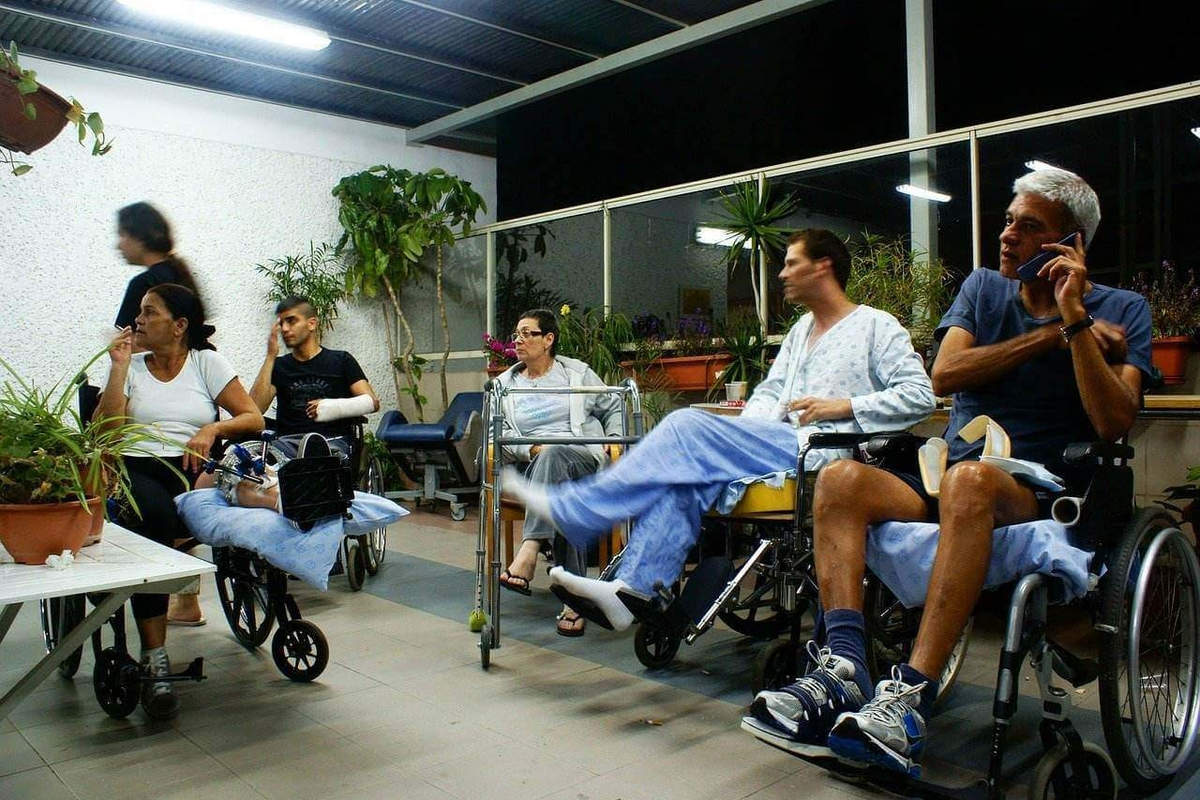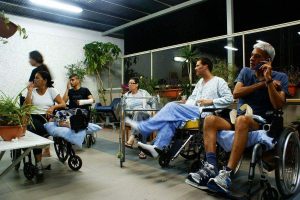
hospital-emergency (pixabay)
Point-of-View – A report on average every two years to note the same dysfunctions of the emergency department and the malaise in the hospital and nothing has moved, notes Dr. Héla Saidi, scientific expert and president of the Democratic France.

By Dr. Héla Saidi
What if President Macron’s real project was not to save the public hospital?
While visiting Cherbourg, President Emmanuel Macron announced on Tuesday, May 31, a one-month “flash mission” to take stock of the difficulties encountered by emergency services.
This has the effect of exasperating the caregivers who are worried about this umpteenth consultation seeing it as a strategy orchestrated by the executive to gain time in the run-up to the legislative elections.
Indeed, for several years now, it has been established that the influx in emergency services has not stopped growing and this for a majority of reasons that do not justify it. It seems that the number of “real” emergencies has remained stable and in the minority. This is why all the reports drawn up to date advocate a total reorganization of the care pathway that could lead to better referral of patients to emergency.
There are already many reports and various consultations that have involved all the actors in the health system and that have already taken stock and issued recommendations, pointing out the lack of resources in hospitals.
“Downstream of emergencies
Among the most significant reports, we can thus count:
- September 2013: During the winter of 2012 -2013, France experienced significant and lasting saturation of emergency departments so that the congestion of emergency departments became a national concern relayed by the media. Several professional meetings (notably the “Assises de l’urgence” of SUDF in 2012) had moreover addressed this subject. This report published in September 2013 was therefore part of a crisis situation in the emergency department. The report “Proposals for good practice recommendations facilitating the hospitalization of patients coming from emergency departments“, was written by Prof. Pierre CARLI, President of the CNUH (“Conseil National de l’Urgence Hospitalière“) and leader of the working group “Aval des urgences“. This ministerial mission was certainly only interested in the downstream part of the emergency department and only recommendations of good practices were expected to facilitate the hospitalization of patients coming from the emergency department. However, this request was already part of a national objective aimed at reducing waiting times in the emergency department by improving downstream services.
The report formulated simple and concrete recommendations with a possible implementation “before October 2013“!
The report emphasized the need for a specific territorial organization of care pathways, and the central role of the general practitioner, who would be able to refer patients to specialized consultations that could lead to short-term hospitalization without having to go to the emergency room.
The founding report
- July 2015: Established 20 years after the STEG report (“founding” report), this report lays down the principles for adapting the strategy of emergency care in view of the worrying increase in the influx of patients in the emergency services. Issued by the Agence Régionale de Santé du Nord Pas de Calais, this report already pointed out the need to apply new methods of organizing medical work in emergency structures according to territorial specificities and by involving regional health agencies.
At that time, it was already recommended to organize the medical regulation through a more important recourse to general practitioners while pooling the different regulation structures. For example, it was proposed to use SMURs in remote and sparsely populated areas while developing inter-hospital nursing transport. To encourage the referral of patients with “real” emergencies to the emergency room, it was proposed to extend the opening periods of medical centres close to the emergency services or to organize specific channels within the territory, such as “minor” traumatology.
The emergencies mirror of the dysfunctions
- July 2017: Information report by Ms. Laurence COHEN, Ms. Catherine GÉNISSON and Mr. René-Paul SAVARY, made on behalf of the Social Affairs Committee, whose title is eloquent: “Hospital emergencies, mirror of the dysfunctions of our health system“. This report was written with a field approach to these issues in order to formulate twenty concrete proposals, anchored in the daily practice of the staff, with a view to their implementation in the short term.
These pragmatic proposals have the advantage of affirming in particular the crucial nature of downstream solutions. In order to improve the practical operation of hospital emergency departments, the proposals included the generalization of good practices in certain hospital structures, improved coordination between hospital emergency medicine and the management of unscheduled care in the city, and changes in pricing to encourage departments to refocus on the management of the most serious situations by creating a fixed fee for referral to city structures.
The rapporteurs insisted that all of these 20 proposals should be undertaken to preserve the quality of the French public emergency service. They also praised the great resilience of the care providers who continued to provide state-of-the-art care despite deteriorating working conditions. Thus, 3 proposals concerned the better consideration of the working conditions of the teams with in particular the creation of a speciality of emergency nurse or the optimization of the involvement of the paramedical professions.
15 recommendations
- December 2019: The report “For a pact to refound the emergency room” was submitted by the deputy Thomas MESNIER and Professor Pierre CARLI to Agnès BUZYN, Minister of Solidarity and Health. Through 15 recommendations, this report insists on a global and sequential approach upstream and downstream of the emergency room to reorganize the emergency room. This is based on better coordination of “city-hospital” care.
In this organization, the attending physician or general practitioner would have a crucial role, as the conductor of the orchestra. In this context, it is easy to understand the importance of organizing the digital shift, which would allow for better transmission of medical information between the various health professionals.
The report also mentions 5 specific measures: the organization of the access to care service, the gradation of emergency structures, the reform of medical transport, the training of doctors and the permanent access to health care, the PASS, which are medical and social care units.
Chronic lack of resources
- The reports of the Cour des Comptes in 2014 and 2019: Despite the implementation of measures since 2014, the court notes that emergency rooms are still overused, leading to frequent situations of tension in the establishments; moreover, the pricing system remains complex and not conducive to the transfer of hospital care to outpatient medicine, which is not sufficiently equipped to receive it. These difficulties in linking the city and the hospital seem to persist due to an unsuitable pricing system and the inadequacy of the supply of unscheduled care in the city.
In 2019, in order to relieve congestion in the emergency room, the Court again called for the acceleration of reforms aimed at developing alternatives to hospital emergencies in the city and reorganizing hospital emergency services according to the territories. Once again, the Court insists heavily on the lack of resources, the medical understaffing that generates tension and the need to reform their financing methods.
Still not in place
In 2019, the Minister of Solidarity and Health agreed with this finding and the recommendations of the Court of Auditors and recalled that under the strategy “My Health 2022” presented by the President of the Republic in September 2019:
- To improve access to local care, particularly in unscheduled care, it was planned upstream of the ER a massive deployment of territorial professional health communities (CPTS), which are spaces for organizing health professionals to provide a collective response to the needs of the population in a territory. The project also planned to rely on the network of local hospitals.
- Concerning the situation downstream of the Emergency Department, the Minister had again asked the CNUH (“Conseil National de l’Urgence Hospitalière“) which had already issued a report in 2013 (see above).
- Finally, the Minister had already planned to redefine the care activities of emergency medicine in order to be able to propose a gradation of the emergency care offer or a differentiated and complementary care offer. Within this framework, it was also planned to develop the role of nurses by extending or modifying the nursing acts.
On reading these different reports, commissioned on average every two years for almost a decade and all pointing out the same dysfunctions and proposing the same solutions, one may wonder why these solutions are still not implemented?
Two million tourists
It is quite understandable that the application of these measures still requires specific adjustments at the level of the territories for their organization, but also modifications to the texts of laws and the public health code.
Nor is there any question here of downplaying the impact of the pandemic on the deployment of the “My Health 2022” project. Of course, many things have been done, but we are up against the wall: emergency rooms are closing, caregivers are leaving public hospitals, and there is also a crisis in vocations. The frustration of health care workers and the feeling of inaction on the part of the executive, and even distrust of the latter, make the situation extremely worrying.
It seems incomprehensible to us that the only response from the executive is yet another consultation, when all that is needed is to commission the Regional Health Agencies. Isn’t it their role to implement these already identified measures while adapting them to the current conditions and to the territorial specificities?
As citizens, we can only show solidarity with the suffering of our caregivers and be concerned about this situation. We propose to relay the appeal of the French Hospital Federation (FHF) of Provence-Alpes-Côte d’Azur, which is already worried about the arrival of 2 million tourists from July onwards, even though emergency services are already under pressure. They describe suffering caregivers who find it increasingly difficult to accept their working conditions and even feel abused. And this “in spite of the mobilization of the liberal ones within the medical houses of guard, practices with extended hours which work mainly in very close link with the services of reception of the urgencies“.
“Avoiding a breakdown”
The FHF PACA is not content to simply sound the alarm but has made proposals to “avoid the breakdown” of emergency services this summer. Their proposals are pragmatic and aim to quickly remedy the current situation. To do so, they propose to establish a communication for users to limit their flow to “real” emergencies, to value and reorganize the work of caregivers by reactivating, for example, the mechanisms of increased remuneration used during the acute phases of the health crisis (revaluation of on-call duty), but also a better regulation of access to unscheduled care. Let us note that there is nothing extravagant or unprecedented in these proposals!
Today, 80% of hospitals “encounter difficulties, whether general or specific to a service, which affect the number of open beds, continuity or permanence of care, depending on the situation”.
If measures are not taken now, it is easy to anticipate a flight of caregivers to the private sector and a deterioration in the quality of care in public hospitals. A first consequence would be an even greater renunciation of care for many of our fellow citizens. More seriously, vital emergency situations may not be treated in time.
If measures are not taken today, the closure of emergency services will create a domino effect causing the collapse of the public hospital.
However, not all French people will be affected: the most affluent will still be able to seek care through the private sector.
What if President Macron’s plan was to strengthen the private sector?
La France démocrate
L’article Caregiver exasperation : a deliberate strategy? est apparu en premier sur FrenchDailyNews.
